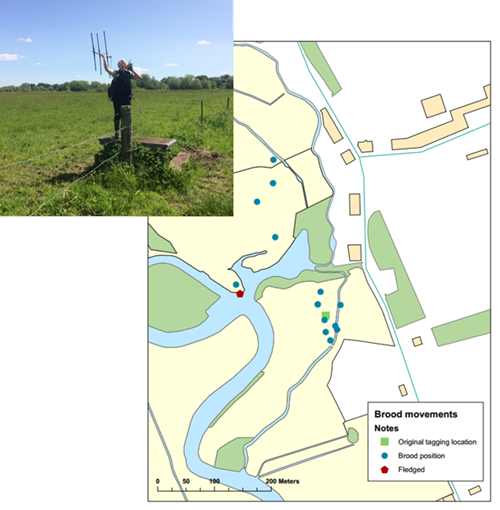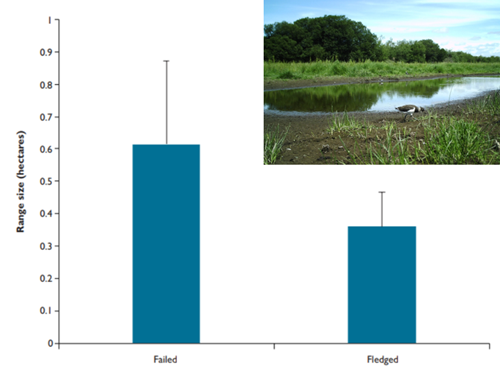As low productivity is the cause of decline in many lapwing populations, there has been fantastic work taking place on lapwing nest and chick survival across Europe and in the UK. Although, a literature base exists on creating suitable habitats for breeding waders on nature reserves, in the context of private land, where profitable farming is also a key land-use, it is important to understand what features are selected most by foraging lapwing broods and thus the most efficient to implement. In addition, lapwing chicks rely on camouflage to evade predation, hence detectability and especially in late spring can be an issue for monitoring survival purely based on observation. Disturbance through repeated observation also has the potential to influence chick survival.
To provide reliable estimates of lapwing chick survival, information on chick movements and use of newly created habitats as well as minimising disturbance, we radio-tag, one chick in each brood captured.

We aim to catch the chicks as they are hatching or a few days old, one chick within the brood is fitted with a small radio tag (see above). These tags weigh 0.4g, which is less than 2.5% of the chick’s body weight when they first hatch, they are attached to the back of the chicks and camouflaged, they fall off once they lose their downy feathers. These tags allow us to monitor chick survival in depth with very low levels of disturbance and have been proven to have no effect on chick survival. All tagging is done under a specific BTO licence.
Below is an example of a radio-tagged chick who was tagged in the nest on day one and its movement recorded, it even crossed a large channel of the river. We know it must have swan across the river as it was not old enough to fly at this point. This behaviour has infact been recorded in several waders and highlights the potential for dispersal even when broods are small. This individual had a home range of size 12,552m².

We radio-tagged one chick in each of 25 lapwing broods in 2015 and 27 broods in 2016. Survival at age of fledging 35 days was estimated at 17% in 2015 and 46% in 2016. We believe chick survival was higher in 2016, due to habitat improvements and wetter field conditions. In addition, our radio-tracking showed that chicks typically ranged over shorter ranges to find food and cover in 2016 (see below). Our tracking also indicated selection of our in-field wet features for foraging.

In these years, chick survival was inversely related to range size, meaning that the further a chick has the travel the more susceptible it is to predation, hence justifying the creation of new-infield wet features in fields favoured for nesting.
Mean range size (ha ± 1 se) of lapwing chicks which failed to fledge (n=14) was significantly higher than of chicks that fledged (n=15) in both 2015 and 2016.
This work has continued since 2016 and we will report on our overall findings at the end of LIFE Waders for Real.